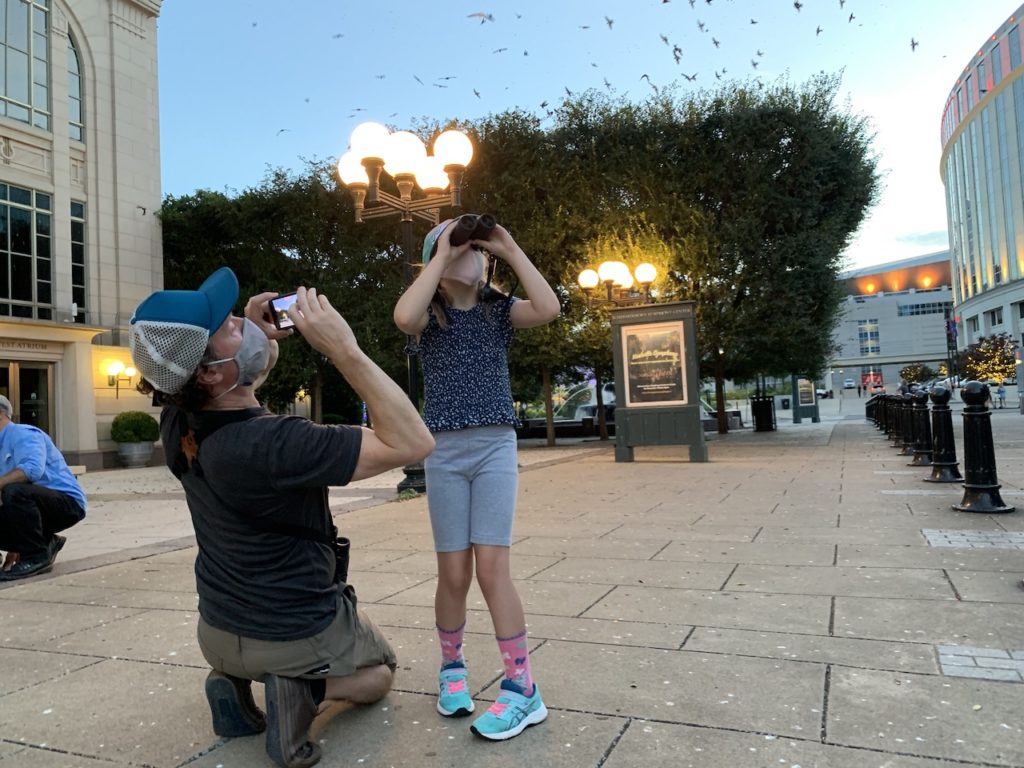
Rare purple martins are dazzling birders and bystanders near Lower Broadway each night for the next week or two. Biologists estimate more than 100,000 have chosen to roost on the plaza outside the Schermerhorn Symphony Center. And the symphony very nearly ran them off as a nuisance until they realized they were playing host to protected migratory songbirds.
Looking overhead as the martins descend into the trees is mesmerizing.
“Oh my gosh, this is amazing. We’re just enveloped right now,” avid birder Ed Schneider says as the birds swoop around him and pepper the sky.
“Sometimes I can’t even tell that they’re birds,” says his 8-year-old daughter, Phoebe. “I’m like, ‘Where am I?’ It’s like I’m in a dream.”
Then watchers snap out of it when a little bird poop hits them on the forehead.
The unsightly and unsanitary droppings are why the symphony decided to hire a pest control company. Besides the droppings on the sidewalks and the sides of the symphony hall, the trees are in pretty rough shape too, with their limbs drooping under the weight of these tiny travelers.
But bird biologists like Melinda Welton of the Tennessee Ornithological Society were already out on the plaza Tuesday night when the truck pulled up, ready to fog out the flock.
“We actually were lucky to have been here,” she says.
Welton and her husband called all the wildlife agencies they could reach after hours. And the symphony stood down.
“They didn’t know, and now we all get a chance to celebrate this spectacle,” she says.
You know, @MoriahFarmer would hate this. pic.twitter.com/243QnQmMHS
— Blake Farmer (@flakebarmer) August 27, 2020
The symphony hasn’t performed since the pandemic hit, and its finances have been in a precarious position. Previously, they’ve had trouble with starlings, an invasive species, and assumed that’s what was making such a mess this time.
Since realizing their identification error, the symphony has welcomed birders nightly to enjoy the display.
“This is not necessarily how we would have thought people might come together,” says chief operating officer Jonathan Marx. “But any opportunity that we can create that, particularly being in the heart of downtown, then we have to embrace that.”
There are hundreds of sites where martins are roosting right now around the country, though none is quite so visible.
Joe Siegrist of the Purple Martin Conservation Association tracks them through weather radar, where they show up each morning as they fly off to hunt for insects. He says the droppings are just part of the deal.
“Usually, that’s something the landowner just has to accept,” he says.
Often, conservation groups or local governments will pitch in to cover the cleanup cost, and that conversation is already started with the symphony. But there’s no point to break out the pressure washing until the martins depart in a week or two.

